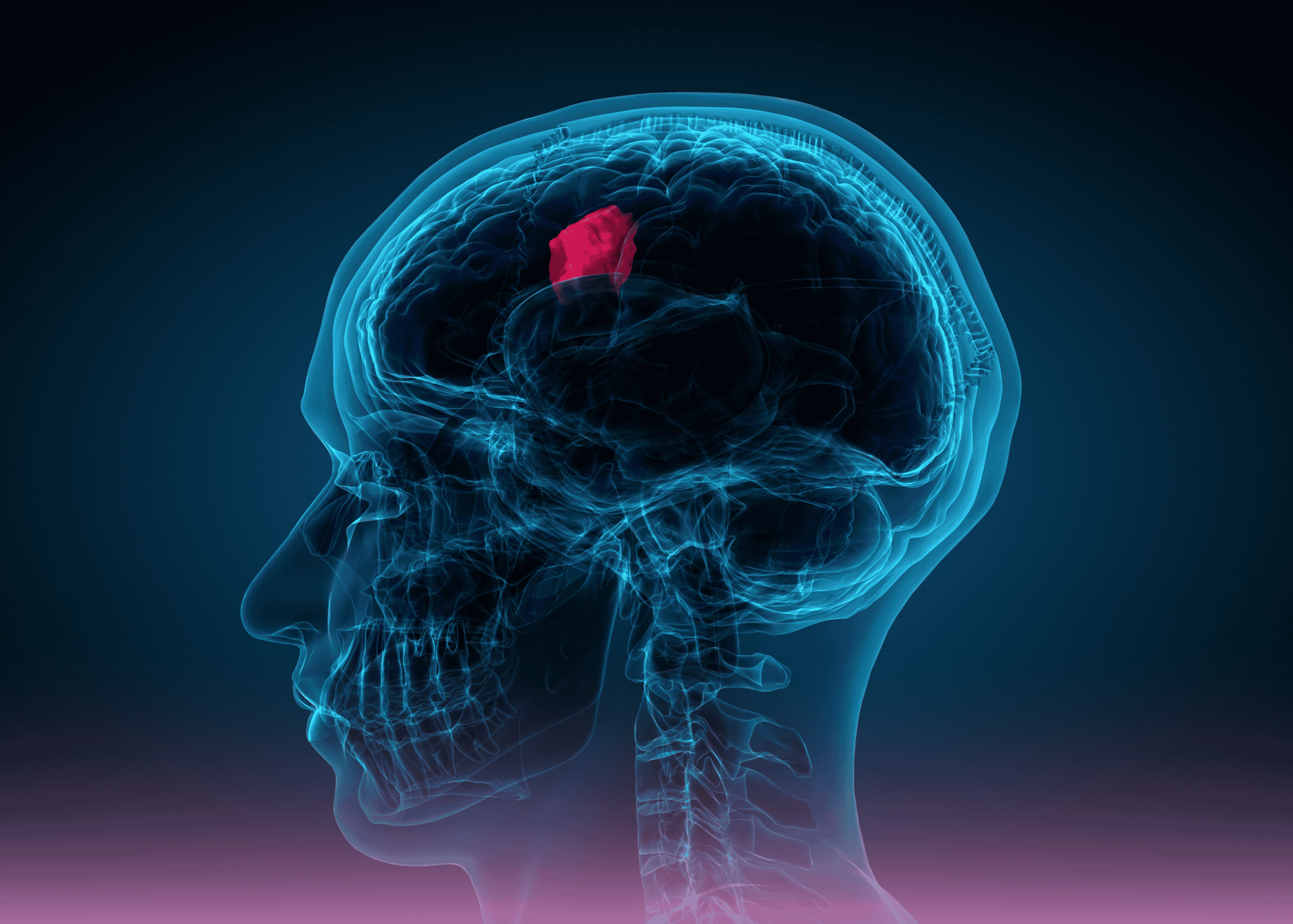Introduction
Burjeel Royal Hospital Al Ain has demonstrated exceptional neurosurgical capabilities with the successful resection of a large and complex supratentorial tumor. This case highlights the critical role of advanced neuro-navigation technology, multidisciplinary collaboration, and precise surgical technique in managing challenging brain lesions while preserving neurological function.
Patient Presentation
The patient presented with multiple seizure episodes associated with a large supratentorial tumor. Imaging studies revealed an extensive intra-axial mass lesion in the left frontal-parietal region measuring approximately 7.8 × 6 × 6.4 cm with surrounding edema and significant mass effect. The tumor was causing partial effacement of the left lateral ventricle and extending into critical neurological structures, including:
- Left basal ganglia
- Body of corpus callosum
- Motor cortex regions
- Left insular cortex
- Primary auditory cortex regions
- Wernicke’s area (language processing center)
This extensive involvement of eloquent brain regions posed significant challenges, as damage to these areas could result in permanent motor, speech, and language deficits.
Surgical Planning and Approach
The neurosurgical team, led by Prof. Dr. Tamer Ibrahim Metwaly and Dr. Mutaz Jamal Abu Nassar, Consultants in Neurosurgery at Burjeel Royal Hospital Al Ain, employed advanced surgical planning and intraoperative technology:
- Preoperative Imaging: Detailed MRI sequences were used to map the tumor’s boundaries and its relationship to critical brain structures.
- Advanced Neuro-Navigation: This GPS-like technology provided real-time guidance during the procedure, allowing precise localization of the tumor and surrounding critical structures.
- Surgical Strategy: The team performed a frontal craniotomy to access the tumor, meticulously excising the glioma while continuously monitoring to avoid damage to functional brain tissue.
- Decompression: Significant effort was directed at relieving intracranial pressure caused by the tumor and surrounding edema.
- Reconstruction: Following tumor removal, careful cranio- and duroplasty procedures restored the integrity of the brain’s protective layers.
Perioperative Management
The complex nature of the case required meticulous perioperative care:
- Seizure Management: Both pre- and postoperatively, the patient experienced focal seizures, which were promptly addressed with dual-dose antiepileptic treatment based on neurologist recommendations.
- Neurological Monitoring: Continuous assessment of neurological status guided postoperative management and rehabilitation.
- Multidisciplinary Approach: Collaboration between neurosurgeons, neurologists, intensivists, and rehabilitation specialists ensured comprehensive care.
Recovery and Outcomes
Despite the formidable challenges posed by this case, the patient demonstrated a remarkable recovery trajectory:
- Stable hemodynamic parameters throughout the perioperative period
- Progressive improvement in consciousness level
- Recovery of verbal communication abilities
- No further seizure episodes following optimization of antiepileptic therapy
- Favorable prognosis confirmed by the intensivist team
Technological Advantages
The successful management of this case was significantly enhanced by Burjeel Royal Hospital Al Ain’s advanced neurosurgical infrastructure:
- Intraoperative Imaging: The hospital’s integrated MRI operating room provided precise guidance for tumor removal.
- KINEVO 900 Microscope: This state-of-the-art operative microscope features robotic visualization, 4K imaging technology, and advanced fluorescence capabilities, allowing for optimal visualization throughout the procedure.
- Neuro-Navigation System: Advanced computer-assisted navigation allowed real-time tracking of surgical instruments in relation to the patient’s anatomy.
Conclusion
This case exemplifies the exceptional level of neurosurgical care available at Burjeel Royal Hospital Al Ain. By combining advanced technology, surgical expertise, and multidisciplinary collaboration, the team successfully managed a challenging brain tumor that involved multiple critical neurological structures. The patient’s favorable recovery highlights the importance of specialized neurosurgical capabilities in achieving optimal outcomes in complex intracranial cases.


